
PPT SubjectVerb Disagreement PowerPoint Presentation, free download ID2370525
Rule #1: A Clause Between the Subject and Verb Will Not Change the Verb. Let's say we had a sentence like this: The child with no friends plays at the park. "The child" is still the subject of the sentence, and "plays" is still the verb. Although the clause "with no friends" has the plural noun "friends," this does not change.
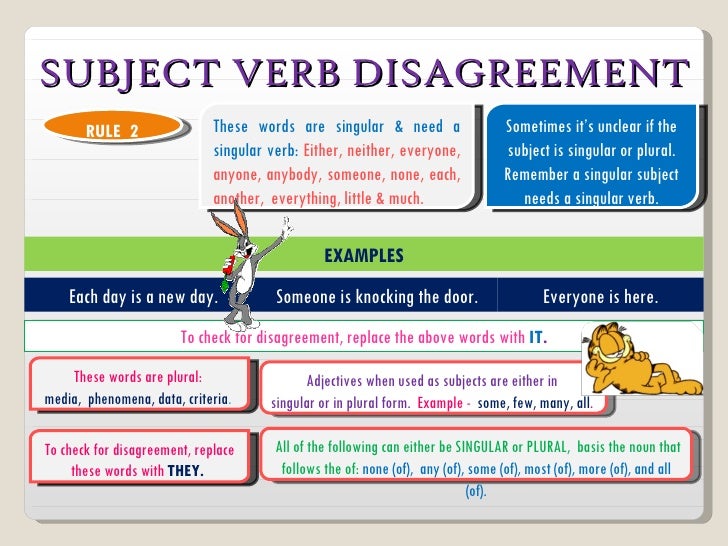
either and neither subject verb agreement DriverLayer Search Engine
The tricky part of subject-verb agreement comes when you are dealing with compound subjects, when there is more than one subject sharing the verb, joined by a conjunction such as 'and', or correlatives like 'both-and', 'either-or', 'neither-nor', etc. For 'and' and 'both-and', the subject is always plural. Both Ian and Kurt are joining the band.

SubjectVerb Disagreement Lesson Ielts, Subject and verb, Essay writing skills
Subject-verb agreement is linked to "verb conjugation." Verb conjugation just means "how a verb changes to agree with various subjects." For example, here are the conjugations of the verb "to be" and "to play" in the present tense : So, when you match "I" with "am" or "he" with "plays," they are examples of subject-verb agreement.
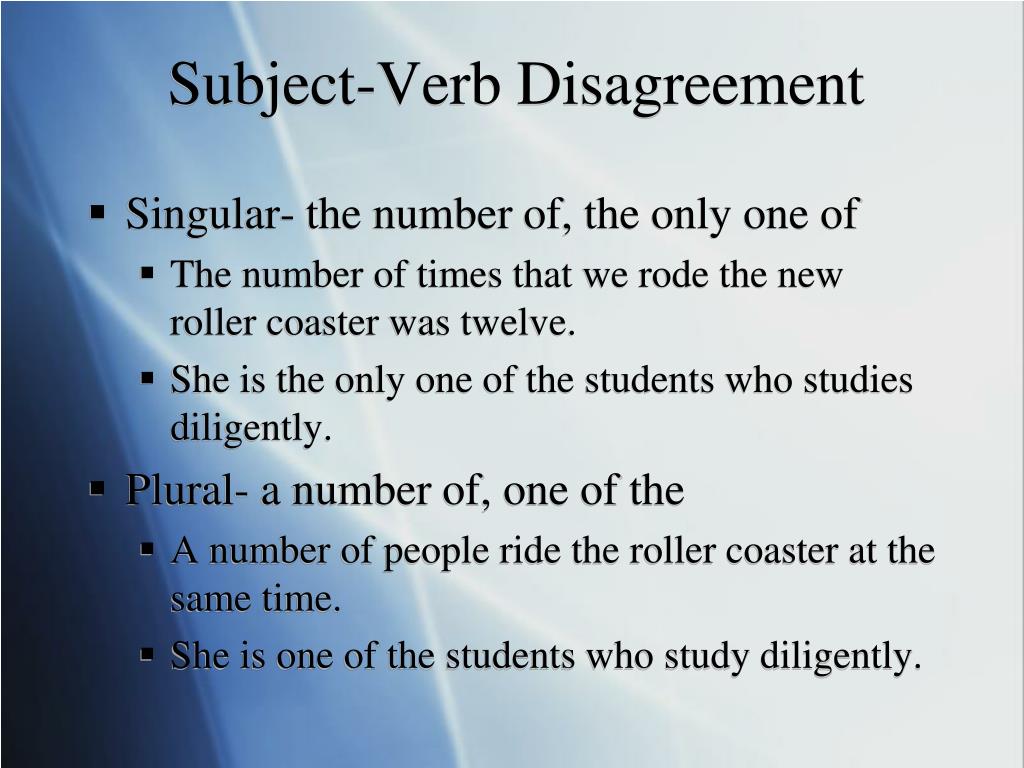
PPT Serious Errors PowerPoint Presentation, free download ID1560855
Basic Rules: What is Subject-Verb Agreement. Rule 1: If there's a singular subject, you have to match it with a singular action or being word. Rule 2: If the subject is plural, you have to ensure there is a plural action or being word. Let's look at some subject-verb agreement examples describing the first two rules.
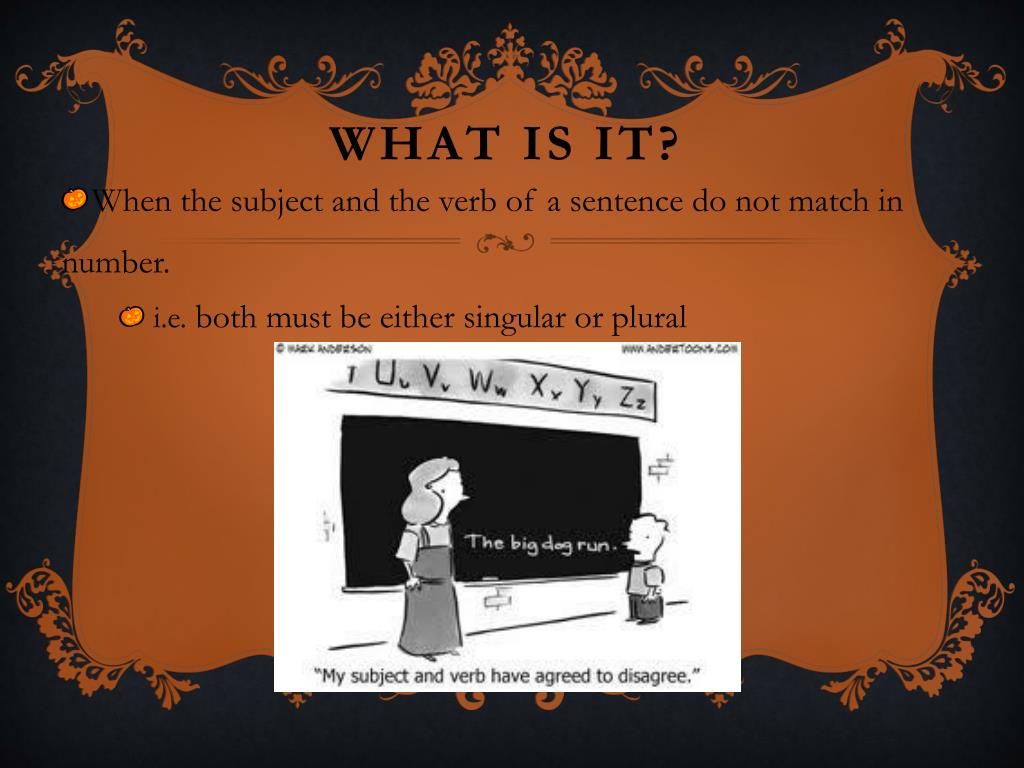
PPT SubjectVerb Disagreement PowerPoint Presentation, free download ID2370525
37 sec read 40,245 Views Ed Good — Grammar Tips Font size: "There's lots of these mistakes." Way too many people have forgotten the rule: A subject must agree with its verb in number. A singular subject demands a singular verb. A plural subject demands a plural verb.

Subject Verb Disagreement Grammar Mistakes) YouTube
Verbs Subject-Verb Agreement | Examples, Rules & Use Subject-Verb Agreement | Examples, Rules & Use Published on April 30, 2019 by Fiona Middleton . Revised on April 18, 2023. Subject-verb agreement means that the subject of the sentence matches the verb describing its action.

Agreement, Disagreement and Partial Agreement Phrases Examples English Grammar Here
Examples: Neither the plates nor the serving bowl goes on that shelf. Neither the serving bowl nor the plates go on that shelf. This rule can lead to bumps in the road. For example, if I is one of two (or more) subjects, it could lead to this odd sentence: Awkward: Neither she, my friends, nor I am going to the festival.
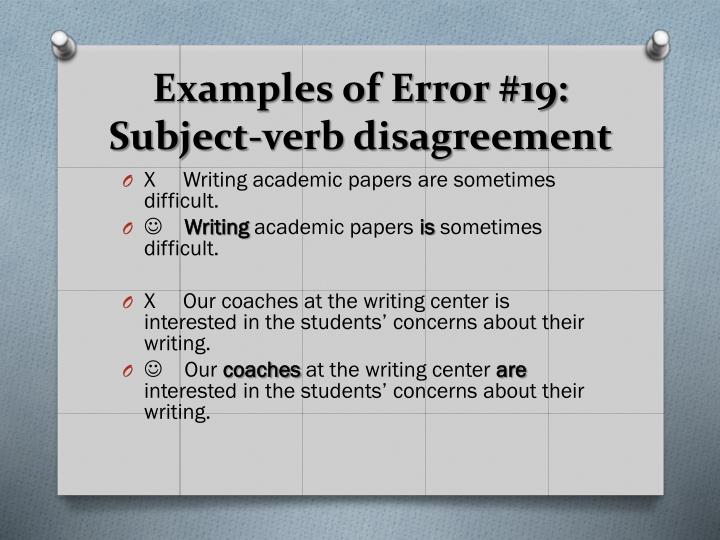
PPT The 20 Most Common E rrors in Writing PowerPoint Presentation ID4850533
Subjects joined by "and" take plural verbs. Be aware: phrases such as "in addition to," "as well as," and "along with" do not mean the same thing as "and.". When inserted between the subject and the verb, these phrases do not change the number of the subject. Both Tom and Jane have English 167 papers due on Tuesday.
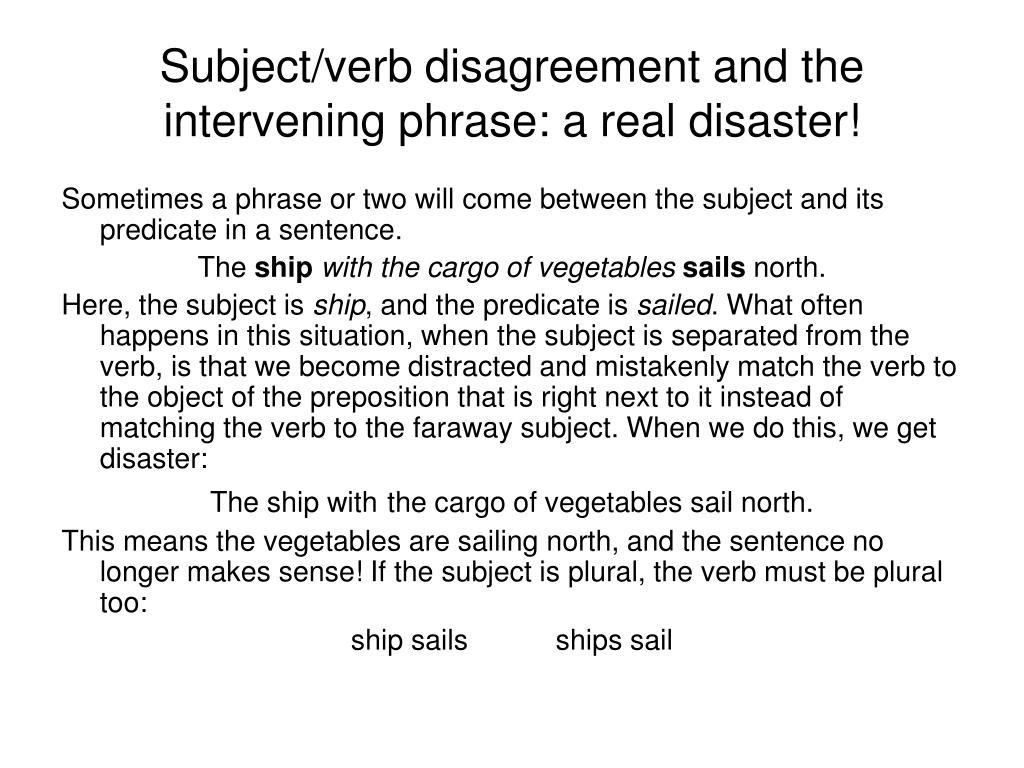
PPT Parts of Speech Review PowerPoint Presentation, free download ID3002393
Definition and Examples What Is Subject-Verb Agreement? Matt Ellis June 28, 2022 Subject-verb agreement is the grammatical rule that the verb or verbs in a sentence must match the number, person, and gender of the subject; in English, the verb needs to match just the number and sometimes the person.
15 Awesome Kinds Of Agreement And Disagreement In Logic
Here are some examples of how to correct subject-verb disagreement: Example 1: The group of students are going to the museum. Correction: The group of students is going to the museum. Explanation: "Group" is a singular subject, so it requires a singular verb. "Are" is a plural verb, so it should be changed to "is."
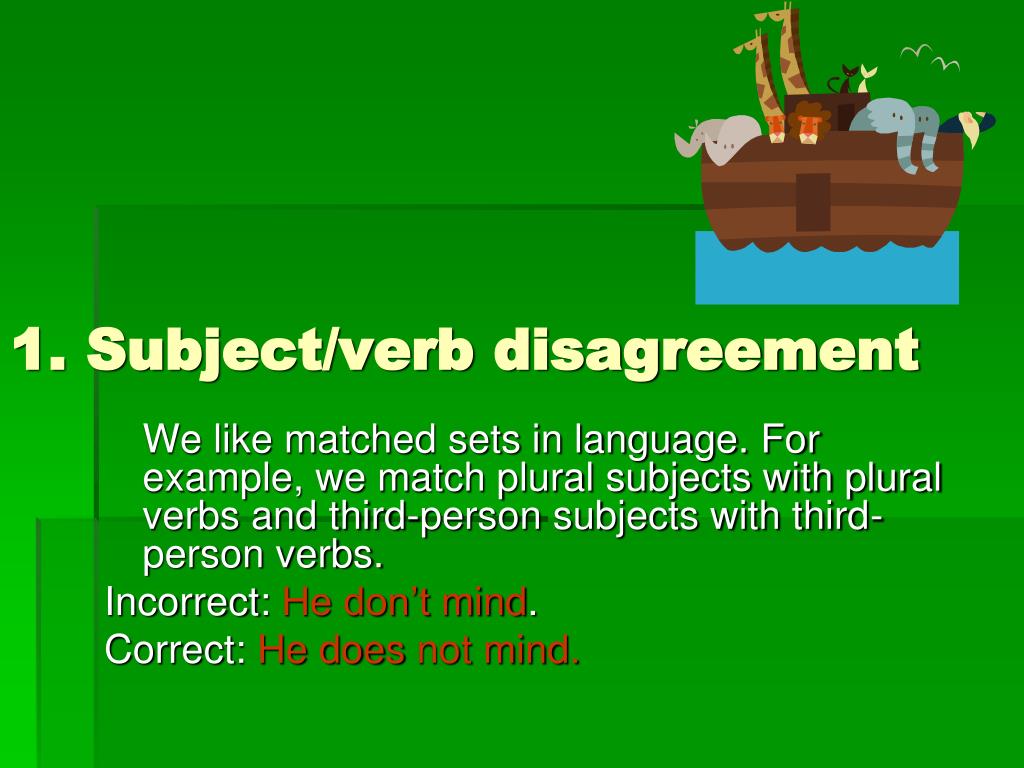
PPT 10 Common Writing Errors PowerPoint Presentation, free download ID2775938
What is subject-verb agreement? Every sentence needs both a subject and a verb to be complete. Some subjects are singular, and some are plural. A singular subject requires a certain form of a verb. In many cases, a plural subject requires a different form of a verb. For example, the cat (subject) sits (verb), but the cats (subject) sit (verb).
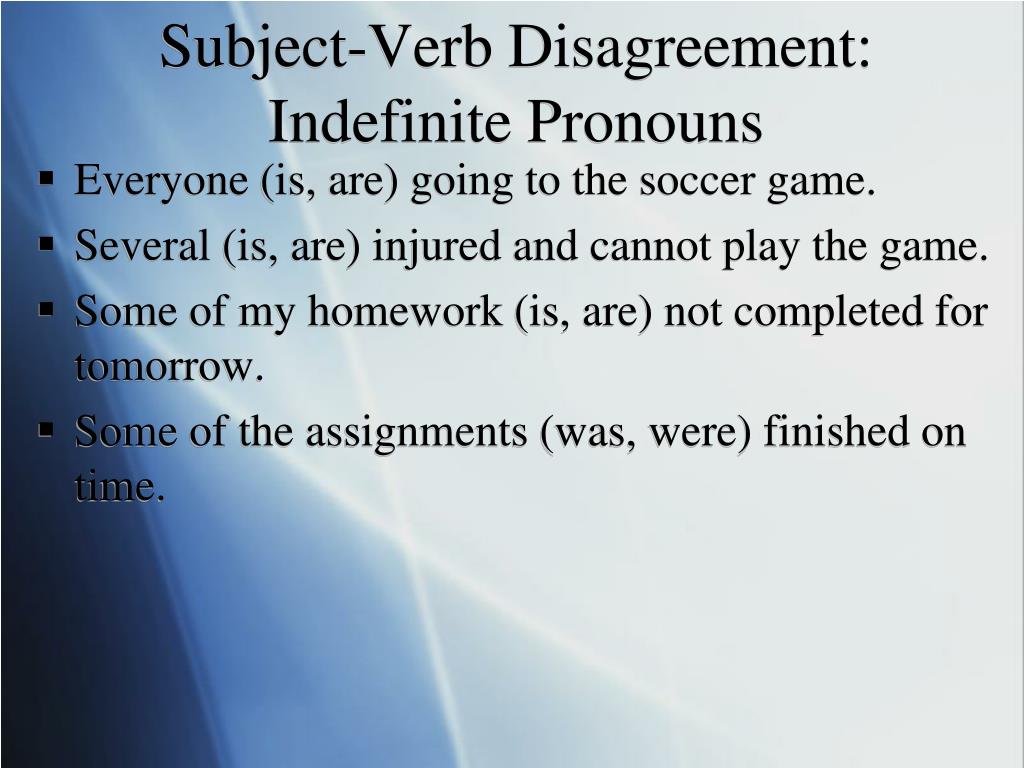
PPT Serious Errors PowerPoint Presentation, free download ID1560855
Answer link Subject-verb agreement is when the subject and the verb agree in number/plurality. On the other hand, subject-verb disagreement is simply the lack of that agreement. So, one way we can look at this is by negating a case of agreement. The banks store money. Banks is the plural subject. What do the banks do?
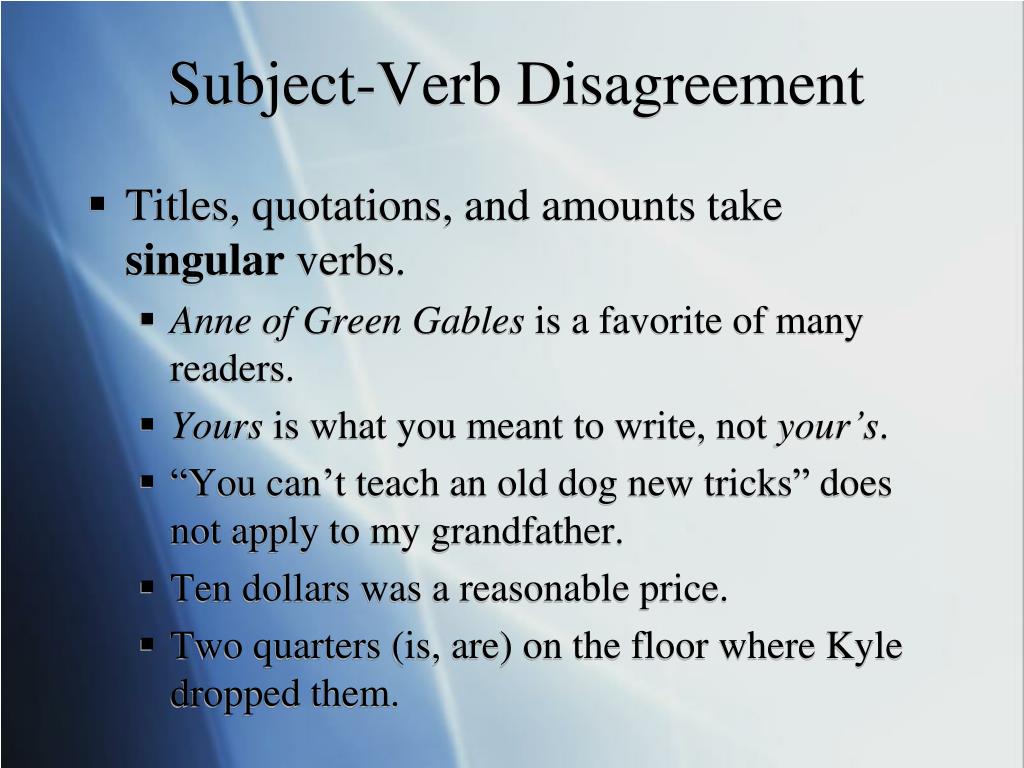
PPT Serious Errors PowerPoint Presentation, free download ID1560855
2. Compose your own sentence that has a prepositional phrase between the subject and the verb. Underline the subject and use bold text for the verb. Do not use examples from this chapter. 3. Compose your own sentence that contains an infinitive as the subject of the sentence. 4. In two sentences, explain whether the following sentence has.

PPT AGREEMENT & DISAGREEMENT PowerPoint Presentation, free download ID2144815
Grammar Subject-Verb Agreement: Definition, Examples, & Exercises The Albert Team Last Updated On: April 10, 2023 Nobody likes conflict, and that includes sentences! We know that every sentence requires a subject and a predicate, but we also have to make sure that these two agree with one another.

Agreement and disagreement u.1
Define subject-verb agreement: the definition of subject-verb agreement is the requirement that a subject and verb of a clause must match in person and in number. In summary, subjects and verbs should always have the appropriate agreement, whether singular or plural. While some can be tricky, it is unacceptable to match a singular subject with.
SubjectVerb Agreement and IELTS TED IELTS
1. When the subject of a sentence is composed of two or more nouns or pronouns connected by and, use a plural verb. She and her friends are at the fair. 2. When two or more singular nouns or pronouns are connected by or or nor, use a singular verb. The book or the pen is in the drawer. 3.